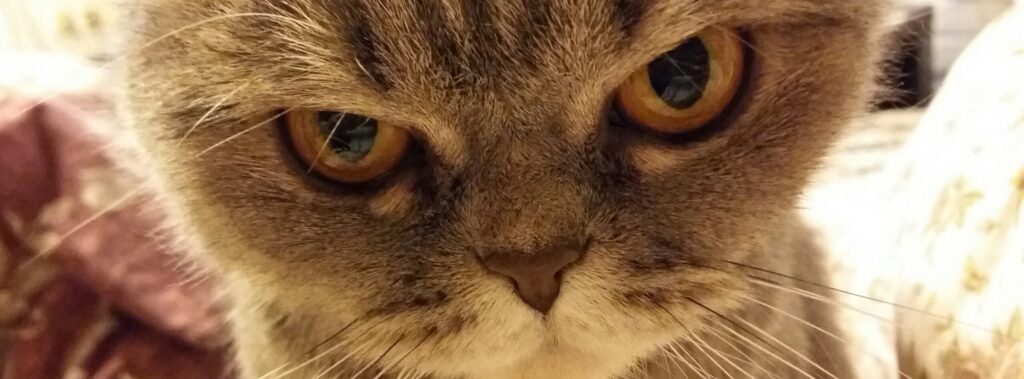Cat people aren’t just quirky – they’re neurologically different. New research reveals that cat ownership physically alters brain structure in measurable ways. The changes affect everything from stress response to social behavior, finally providing scientific evidence for what cat owners have always insisted: their pets genuinely change who they are as humans.
The Brain Science
Researchers examining brain scans of cat owners versus non-owners discovered structural differences in regions responsible for emotional processing, stress management, and social cognition. The differences aren’t subtle or speculative – they show up clearly in imaging, demonstrating that living with cats creates measurable neurological changes.
The specific areas affected include the amygdala, which processes emotions and fear responses, and portions of the prefrontal cortex involved in social behavior and decision-making. Cat owners show different activation patterns in these regions compared to people who’ve never lived with cats, suggesting the relationship genuinely reshapes how the brain processes certain types of information.
These aren’t temporary changes that disappear when the cat leaves the room. The neurological alterations appear to be lasting adaptations that persist as long as the person maintains close relationships with cats. Your brain physically adapts to accommodate and respond to the unique demands of understanding and caring for a semi-domesticated predator that lives in your house.

Why Cats Specifically?
Dogs also affect their owners’ brains, but in different ways. Dogs are pack animals with social hierarchies legible to humans. They want to please, they follow commands, and their emotional states are relatively transparent. Cats operate on entirely different principles that require humans to develop new interpretative skills.
Cats are solitary hunters who domesticated themselves rather than being bred by humans. They communicate through subtle body language, vocalizations they developed specifically for human interaction, and behavioral cues that require close attention to decipher. Reading a cat’s mood and intentions exercises different neural pathways than reading a dog’s more obvious signals.
Living with cats trains your brain in nuanced observation and interpretation of non-verbal communication. You learn to distinguish between seventeen different types of meows, to recognize the ear position that signals playfulness versus irritation, to understand that slow blinks mean affection. This constant practice of reading subtle cues and responding appropriately creates the structural brain changes researchers are observing.
The Stress Connection
One of the most significant findings involves how cat ownership affects stress response systems. Cat owners show different patterns of cortisol regulation and stress recovery compared to non-owners. The act of petting a cat, listening to purring, and engaging in the calm, meditative interactions cats often invite appears to create lasting changes in how the brain handles stress.
Purring specifically operates at frequencies (25-150 Hz) that research suggests may have therapeutic effects on humans. These vibrations might promote healing, reduce stress hormones, and create the sense of calm that cat owners report feeling around their pets. Your brain learns to associate these experiences with safety and relaxation, creating neural patterns that persist even when the cat isn’t present.
The stress reduction isn’t just about having a warm, fuzzy creature to pet. Cats’ independent nature means they provide companionship without the demanding neediness of dogs. You get social interaction on terms that feel less obligatory and more mutual – the cat chooses to be near you, which registers differently in your brain than a dog who’s been bred specifically to seek your approval.

Social Behavior Changes
Perhaps most fascinating are the changes in brain regions involved in social cognition. Cat owners develop enhanced abilities to read subtle emotional cues and interpret indirect communication – skills that transfer beyond feline relationships into human interactions.
This makes evolutionary sense. Humans and cats have coexisted for roughly 10,000 years, but the relationship differs fundamentally from our partnership with dogs. Cats never became fully domesticated in the traditional sense. They retain wild instincts and independent nature that require humans to meet them halfway rather than simply commanding them.
This dynamic creates different social learning. Dog owners learn to be leaders their pets want to follow. Cat owners learn to be diplomats navigating relationships with creatures who view them as equals at best, servants at worst. The negotiation skills required for successful cat relationships apparently reshape neural architecture in lasting ways.
The Cat Person Personality
This research provides neurological backing for the stereotypical cat person personality – introverted, independent, comfortable with ambiguity, attuned to subtle social cues. It’s not that people with these traits seek out cats. It’s that cats create these traits by rewiring the brains of people who live with them.
The changes help explain why cat people so fiercely defend their pets against cultural biases favoring dogs. When an animal has literally changed your brain structure, shaping how you process emotions and social interactions, of course you develop fierce loyalty. The cat hasn’t just become part of your life – it’s become part of how your neural networks operate.

What This Means
Understanding that pet ownership creates measurable brain changes elevates the human-animal bond from sentimental attachment to recognized neurological partnership. Your cat isn’t just cute – it’s an active participant in shaping your neural architecture and, by extension, your personality and social behavior.
For cat owners, the research validates what they’ve always known intuitively: their relationship with their pets runs deeper than simple companionship. The purring furball sleeping on your lap is simultaneously rewiring your stress response systems, sharpening your ability to read subtle cues, and creating lasting changes in how your brain functions.
Cat people really are different. Now we know it’s not just attitude – it’s neuroscience.

